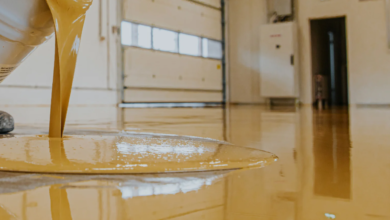Improving Mobility: Physiotherapy for Elderly

Mobility is a fundamental aspect of life that significantly impacts the quality of living, particularly for the elderly. As individuals age, maintaining mobility becomes crucial not only for physical health but also for mental and emotional well-being. The ability to move freely allows seniors to engage in daily activities, socialize with peers, and maintain independence.
This independence is vital as it fosters a sense of self-worth and dignity, enabling older adults to participate actively in their communities. When mobility is compromised, it can lead to a cascade of negative outcomes, including isolation, depression, and a decline in overall health. Moreover, mobility is closely linked to the prevention of various health issues.
Regular movement helps to maintain cardiovascular health, improve muscle strength, and enhance flexibility. For elderly individuals, these factors are essential in reducing the risk of chronic diseases such as heart disease, diabetes, and obesity. Additionally, mobility plays a critical role in maintaining bone density, which is particularly important for older adults who are at a higher risk of osteoporosis and fractures.
Therefore, understanding the importance of mobility is not just about physical movement; it encompasses a holistic view of health that includes emotional and social dimensions.
Common Mobility Issues Faced by Elderly
Elderly individuals often face a myriad of mobility issues that can stem from various factors, including age-related physiological changes, chronic health conditions, and environmental barriers. One of the most prevalent issues is arthritis, which affects millions of older adults and leads to joint pain and stiffness. This condition can severely limit an individual’s range of motion and ability to perform everyday tasks such as walking, climbing stairs, or even standing up from a seated position.
The pain associated with arthritis can deter seniors from engaging in physical activity, creating a vicious cycle that exacerbates their mobility challenges. Another common issue is balance impairment, which can be attributed to factors such as vestibular disorders or muscle weakness. Balance problems increase the risk of falls, which are a leading cause of injury among the elderly.
Falls can result in serious consequences, including fractures and head injuries, which may further limit mobility and independence. Additionally, neurological conditions such as Parkinson’s disease or stroke can lead to significant mobility impairments. These conditions often result in muscle rigidity or weakness on one side of the body, making it difficult for individuals to walk or perform coordinated movements.
Understanding these common mobility issues is essential for developing effective interventions that can help improve the quality of life for elderly individuals.
The Role of Physiotherapy in Improving Elderly Mobility
Physiotherapy plays a pivotal role in addressing mobility issues among the elderly by providing tailored interventions aimed at enhancing physical function and independence. Physiotherapists are trained professionals who assess an individual’s physical capabilities and limitations, allowing them to design personalized treatment plans that target specific mobility challenges. Through a combination of exercises, manual therapy, and education, NDIS physiotherapy can help seniors regain strength, improve balance, and enhance overall mobility.
One of the key components of physiotherapy is the use of therapeutic exercises that focus on strengthening muscles and improving flexibility. For instance, resistance training can be particularly beneficial for older adults as it helps counteract age-related muscle loss. Additionally, physiotherapists often incorporate balance training exercises into their programs to reduce the risk of falls.
Techniques such as tai chi or specific balance exercises can significantly enhance stability and coordination. Furthermore, physiotherapists educate seniors on proper body mechanics and posture during daily activities, which can prevent injuries and promote safer movement patterns.
Tailored Exercise Programs for Elderly Mobility
Creating tailored exercise programs for elderly individuals is essential for addressing their unique mobility needs while considering their physical limitations and health conditions. A well-designed program typically includes a variety of components: strength training, flexibility exercises, balance training, and aerobic activities. Strength training is crucial for maintaining muscle mass and bone density; exercises using resistance bands or light weights can be particularly effective.
For instance, seated leg lifts or wall push-ups can be adapted to suit varying levels of ability while still providing significant benefits. Flexibility exercises are equally important as they help maintain joint range of motion and reduce stiffness. Gentle stretching routines can be incorporated into daily activities or performed during physiotherapy sessions.
Balance training should also be a focal point; exercises such as standing on one leg or using balance boards can enhance stability and coordination. Aerobic activities like walking or swimming not only improve cardiovascular health but also contribute to overall endurance. By tailoring these programs to individual capabilities and preferences, physiotherapists can motivate elderly clients to engage in regular physical activity, ultimately leading to improved mobility and quality of life.
Assistive Devices and Mobility Aids for Elderly
Assistive devices and mobility aids play a crucial role in enhancing the independence and safety of elderly individuals facing mobility challenges. These tools range from simple items like walking sticks to more complex devices such as wheelchairs or scooters. The choice of assistive device often depends on the specific needs of the individual; for example, a cane may provide adequate support for someone with mild balance issues, while a walker might be necessary for those requiring more stability.
In addition to traditional aids like walkers and canes, there are also innovative technologies designed to assist with mobility. For instance, powered scooters allow individuals with limited endurance to navigate their environment with ease. Stairlifts are another example; they enable seniors to access different levels of their homes safely without the risk of falling on stairs.
Furthermore, home modifications such as grab bars in bathrooms or ramps at entrances can significantly enhance accessibility for elderly individuals. By utilizing these assistive devices effectively, seniors can maintain their independence while minimizing the risk of injury.
Fall Prevention Strategies through Physiotherapy
Fall prevention is a critical concern for elderly individuals due to the high incidence of falls leading to serious injuries. Physiotherapy offers various strategies aimed at reducing fall risk through comprehensive assessments and targeted interventions. One effective approach involves conducting thorough evaluations to identify specific risk factors such as muscle weakness, balance impairments, or environmental hazards within the home.
Once these factors are identified, physiotherapists can implement tailored exercise programs focusing on strength building and balance improvement. For example, exercises that enhance lower body strength—such as squats or heel raises—can significantly improve stability when walking or standing. Additionally, physiotherapists often educate seniors about safe movement strategies and environmental modifications that can reduce fall risks at home.
Simple changes like ensuring adequate lighting or removing tripping hazards can make a substantial difference in preventing falls.
Addressing Pain and Stiffness in Elderly Joints
Pain and stiffness in joints are common complaints among elderly individuals, often resulting from conditions like osteoarthritis or rheumatoid arthritis. These issues can severely limit mobility and affect daily activities. Physiotherapy provides effective strategies for managing pain and stiffness through various modalities such as manual therapy, therapeutic exercises, and education on self-management techniques.
Manual therapy techniques performed by physiotherapists can help alleviate pain by improving joint mobility and reducing muscle tension around affected areas. Techniques such as joint mobilization or soft tissue massage can provide immediate relief from discomfort while promoting better movement patterns. Additionally, therapeutic exercises designed specifically for joint health can strengthen surrounding muscles and improve flexibility.
For instance, low-impact activities like swimming or cycling are often recommended as they minimize stress on joints while promoting overall fitness. Education plays a vital role in managing pain; physiotherapists often teach clients about proper body mechanics during daily activities to prevent exacerbation of joint issues. They may also recommend lifestyle modifications such as weight management or dietary changes that support joint health.
By addressing pain and stiffness comprehensively through physiotherapy, elderly individuals can experience improved mobility and enhanced quality of life.
The Benefits of Regular Physiotherapy for Elderly Mobility
Engaging in regular physiotherapy offers numerous benefits for elderly individuals seeking to improve their mobility and overall well-being. One significant advantage of making fitness fun again is the personalized approach that physiotherapists provide; each treatment plan is tailored to meet the specific needs and goals of the individual. This individualized attention ensures that seniors receive appropriate interventions that address their unique challenges while promoting optimal outcomes.
Furthermore, regular physiotherapy sessions foster accountability and motivation among elderly clients. The structured environment encourages consistent participation in exercise programs that may otherwise be neglected due to lack of motivation or fear of injury. As clients progress through their rehabilitation journey, they often experience increased confidence in their abilities, leading to greater engagement in social activities and daily tasks.
Additionally, ongoing physiotherapy can help monitor changes in health status over time; physiotherapists are trained to recognize early signs of deterioration in mobility or function. This proactive approach allows for timely interventions that can prevent further decline and promote long-term health benefits. Ultimately, regular physiotherapy not only enhances mobility but also contributes significantly to the overall quality of life for elderly individuals by empowering them to lead active and fulfilling lives despite age-related challenges.





